Statistics for Super Sete
Statistics of real draws
In Super Sete statistics, the numbers are represented as follows: the first number (ten) represents the column and the second number (unit) represents the line/number. Example: 15 corresponds to column 1, number 5.
Super Sete (until the draw 537 on
Apr 26, 2024)
Distribution of even and odd numbers
Occurrences of even and odd numbers in draws
Quantity of even numbers
Quantity of
even numbers drawn
Actual frequency
Expected frequency
0
1
2
3
4
5
6
7
|
Quantity
of
even numbers drawn
|
Actual
occurrences
|
Expected
occurrences
|
Last
draw
|
Shortest
interval
|
Largest
interval
|
Current
interval
|
Average
interval
|
|
0
|
1
|
4
|
298
|
298
|
298
|
239
|
298.00
|
|
1
|
28
|
29
|
484
|
1
|
77
|
53
|
17.29
|
|
2
|
91
|
88
|
531
|
1
|
34
|
6
|
5.84
|
|
3
|
160
|
146
|
534
|
1
|
18
|
3
|
3.34
|
|
4
|
146
|
146
|
535
|
1
|
16
|
2
|
3.66
|
|
5
|
84
|
88
|
537
|
1
|
24
|
0
|
6.39
|
|
6
|
26
|
29
|
513
|
1
|
80
|
24
|
19.73
|
|
7
|
1
|
4
|
74
|
74
|
74
|
463
|
74.00
|
- The table shows data on the distribution of even and odd numbers on draws, considering all draws of super sete (with the current matrix).
- Actual occurrences are the real total occurrences of a determined quantity of even/odd numbers on draws.
- Expected occurrences are the expected occurrences of a determined quantity of even/odd numbers on draws, according to mathematical probability.
- Last draw is the most recent draw in which occurred a determined quantity of even/odd numbers.
- Shortest interval is the shortest gap between draws in which occurred a determined quantity of even/odd numbers.
- Longest interval is the longest gap between draws in which occurred a determined quantity of even/odd numbers.
- Current interval is the current interval since the last draw in which occurred a determined quantity of even/odd numbers.
- Average interval is the general average of intervals between draws in which occurred a determined quantity of even/odd numbers (until the last draw in which occurred a determined quantity of even/odd numbers).
- The actual and expected occurrences tend to get closer to each other the largest the sample.
Main
Results
Statistics
Wheels
Subscription


